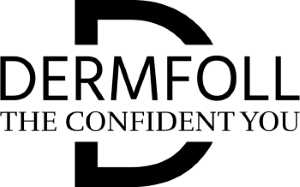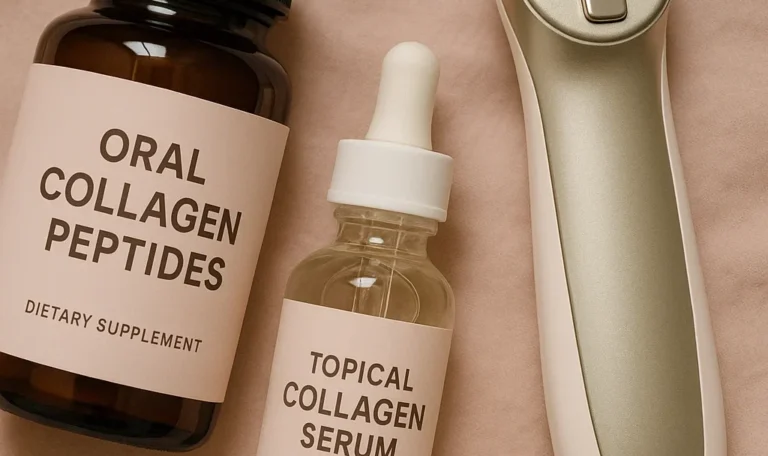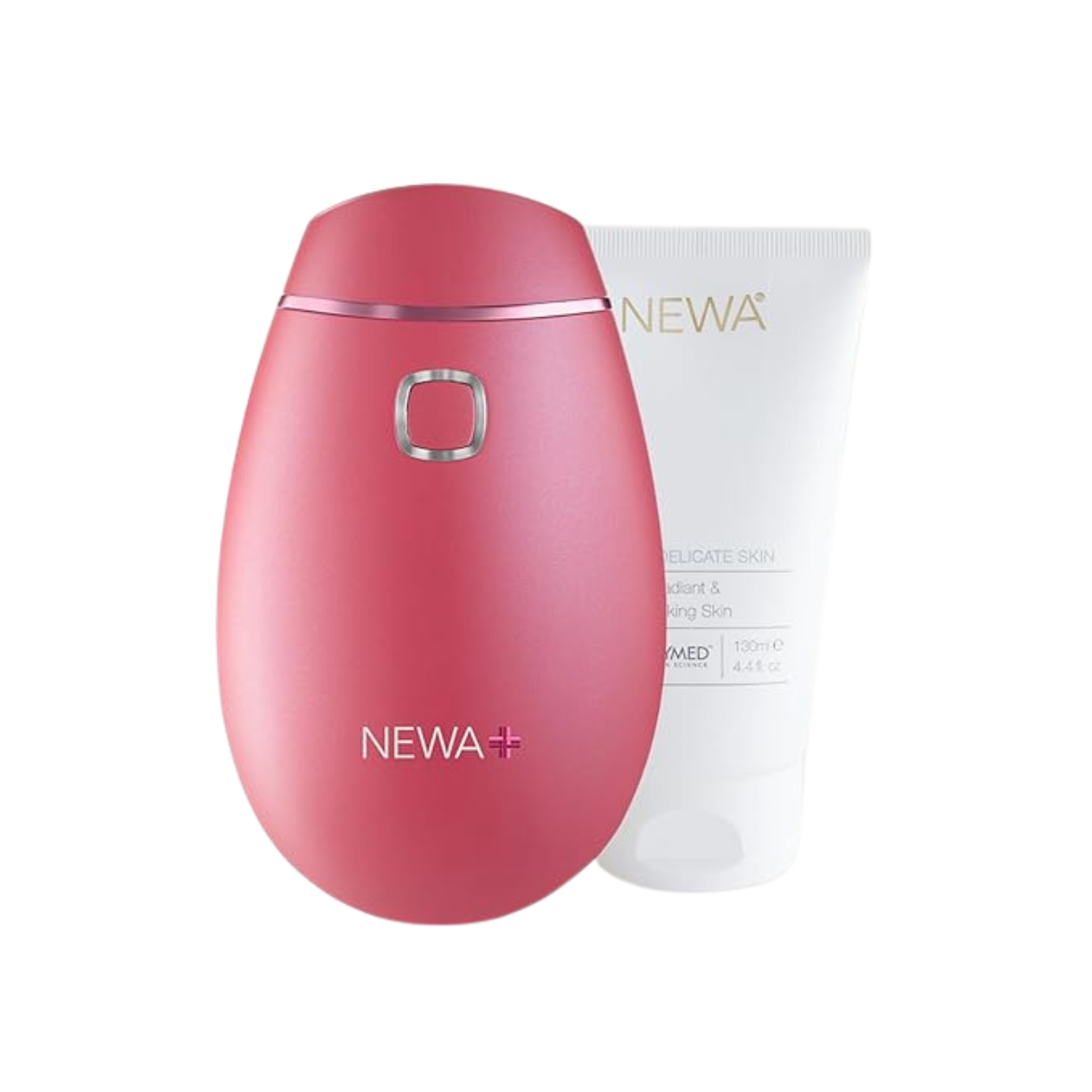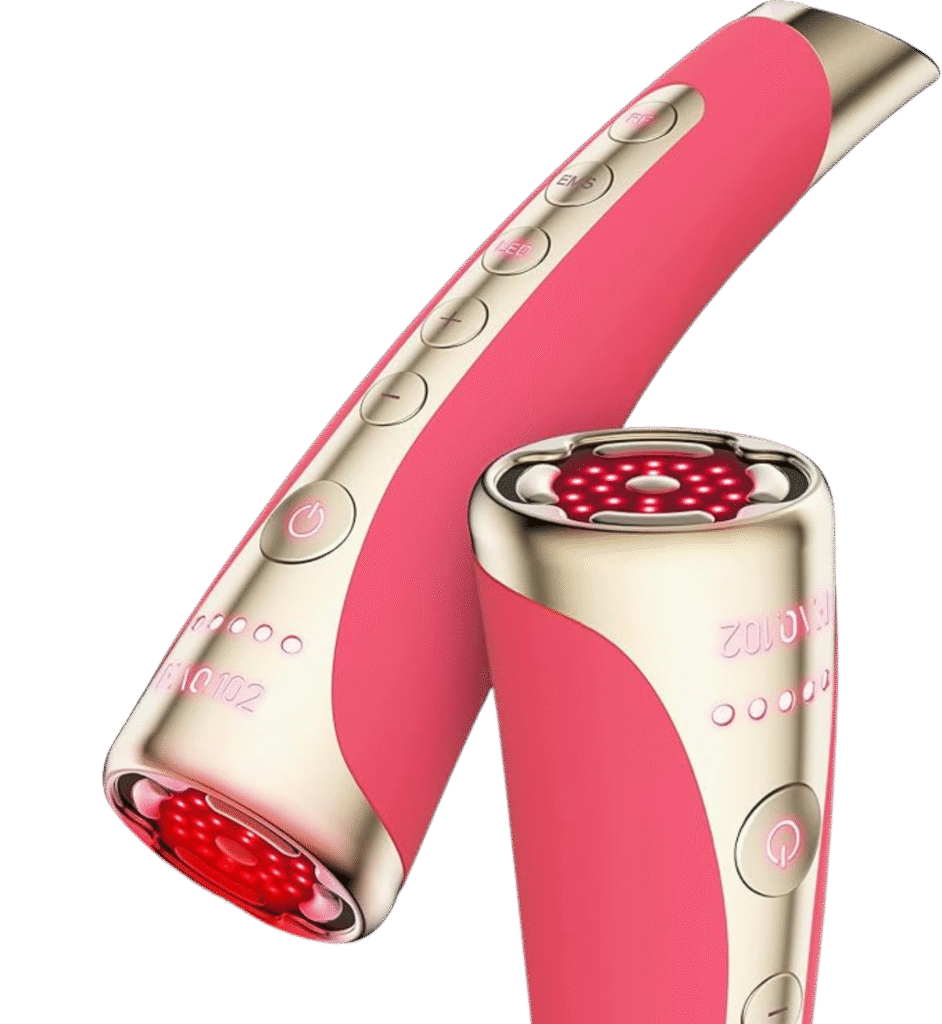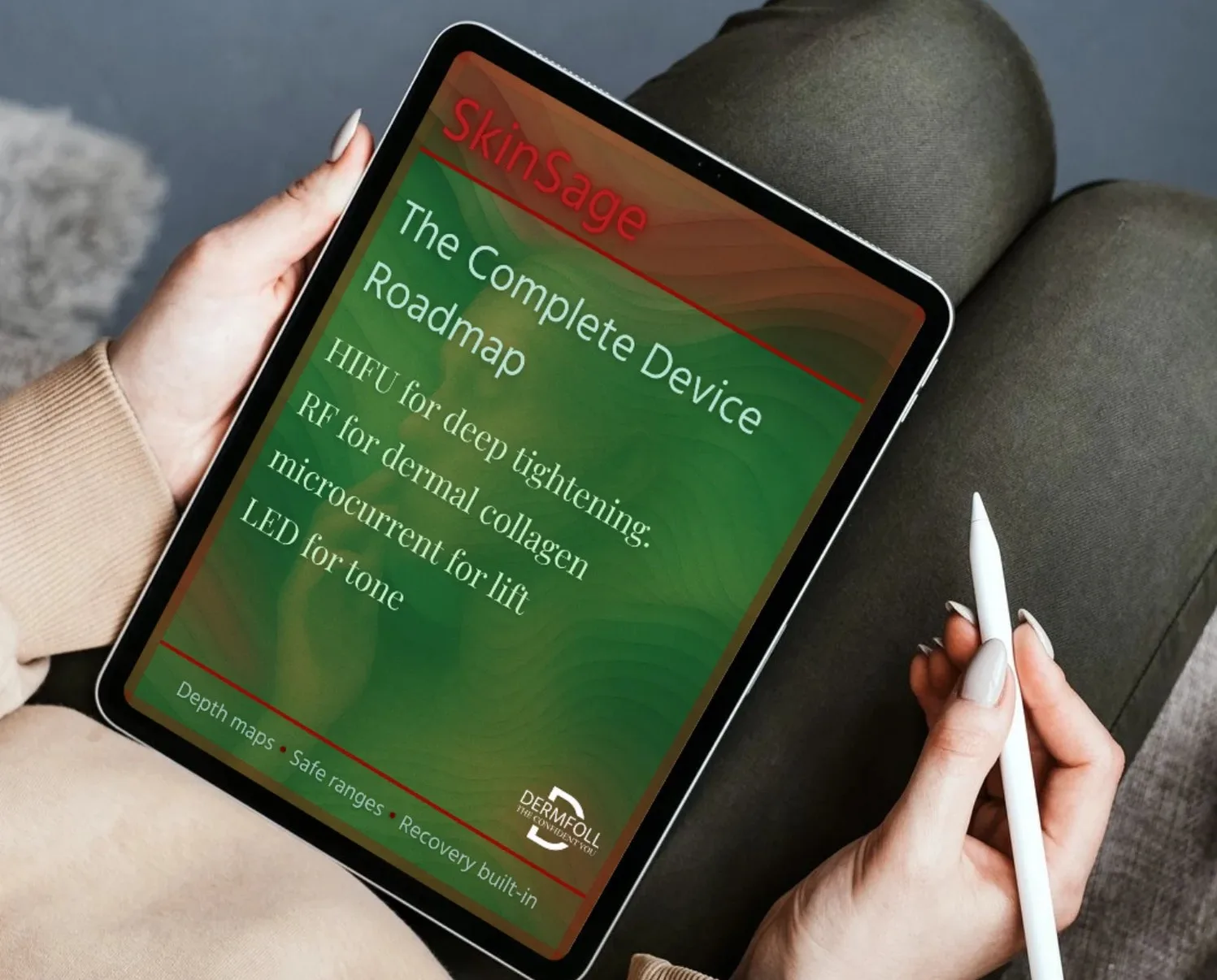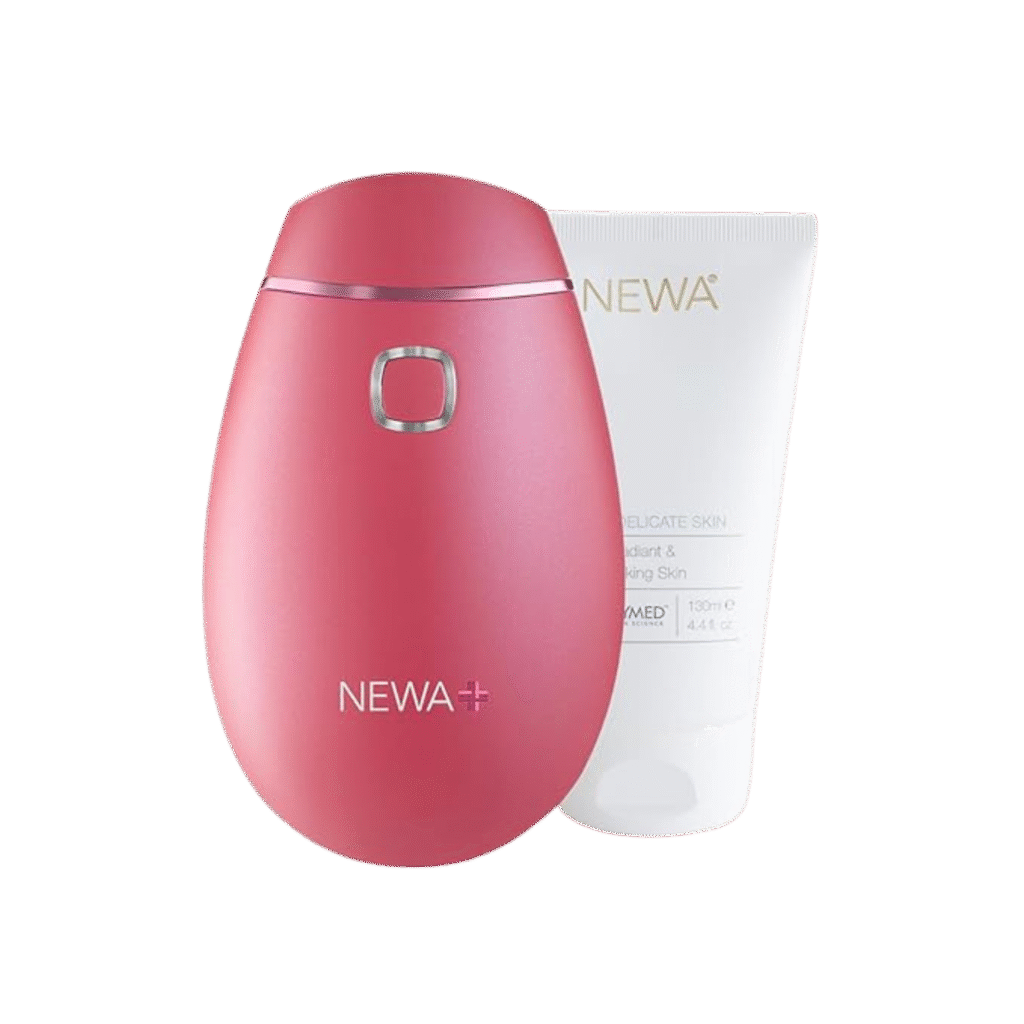What Are The Types of Collagen in Dermis? A quick Intro to skincare science
When understanding Radio Frequency Collagen Skin Rejuvenation, it’s important to understand how your skin is structured. The dermis, the middle layer of the skin. The part that provides structural support and elasticity. Largely due to the 2 specific collagen types. These two types are found in abundance in the dermis, Type I and Type III collagen.
Type I Collagen is prevalent, making up approximately 80% of the collagen in the dermis. In charge of the tensile strength of your dermis. Essential for wound healing. And forms thick fibers that create a scaffold for the skin’s structure.
Type III Collagen, In the minority, yet significant in its contributions. It makes up around 10-15% of the dermal collagen. Type III collagen provides elasticity. And quite important in the early stages of wound healing.
There are few other types found in the dermis, albeit in smaller amounts, include Type V and Type VI Collagen. Type V collagen though found in very low quantities, regulate the size of collagen fibrils.
However, your main focus must be on type I and III
Function of collagen in dermis
Type I Collagen
- Structure
- Thick, rope-like fibers that are densely packed.
- Forms a robust network of fibers that create a strong support for the skin.
- Function
- Provides tensile strength, helps skin recover from stretch and stress.
- maintains skin firmness and integrity.
- Acts as the initial scaffold during wound healing and scar formation.
Type III Collagen
- Structure
- Are thinner, more flexible compared to Type I collagen.
- Act as a supportive network that complements the foundation built by Type I collagen.
- Function
- Elasticity and flexibility, gives the skin its memory foam like characteristic. Making sure the skin return to its original shape.
- Involved in the early stages of wound healing by forming a temporary scaffold.
| Type of Collagen | Location in Skin |
|---|---|
| Type I | Dermis |
| Type III | Dermis |
| Type IV | Basement membrane |
| Type VI | Papillary dermis |
| Type VII | Anchoring fibrils below basement membrane |
| Type II | Primarily in cartilage, occasionally in dermal regions |
| Type V | Dermis |
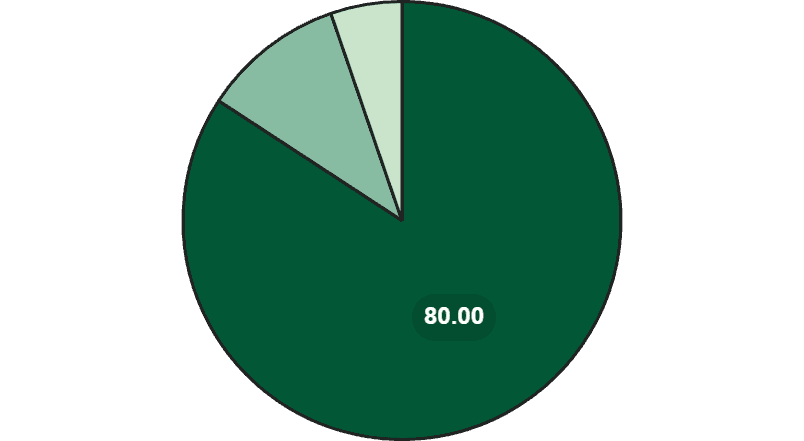
Type I – 80%Type III – 15%Type V – 5%
How Does collagen Change as We Age?
With time and trauma, the composition of our skin undergoes a steady change. Affecting its appearance and altering its functionality. The most apparent changes occur in the amounts, and in the ratios of Type I and Type III collagen in your dermis.
In individuals below the age of 35, Type I collagen predominates. accounting for about 80% of the total collagen. This high concentration of Type I collagen gives firmness and makes it resilient.
Why Does Collagen Decrease With Age?
However, with maturity, the production of Type I collagen gradually decreases. Reaching around 60-70%, resulting in one of the 3 major reasons why aged skin loses its firmness. Which makes your skin more prone to wrinkles and sagging.
Secondly, relative proportion of Type III collagen increases with assent. While it makes up about 10-15% of the dermal collagen in younger age bracket.
The proportion rises to around 20-30%. The increase in Type III collagen is a compensatory response to the decrease in Type I collagen. This also indicates changes in the skin’s repair mechanisms and structural organization.
Lastly, decline in the overall synthesis of collagen. And modifications in the existing collagen fibers, such as cross-linking and fragmentation.
The combined effect of these alterations is a noticeable increase in the appearance of fine lines and wrinkles.
The Role of Hydration and Elasticity in aging skin
To understand hydration, We must first understand the relationship of skin elasticity with age. In context to skin health. Elasticity is your skin’s ability to return to its original shape after being stretched.
With age and external stressors. Skin’s elastic fibers, composed of collagen and elastin, begin to degrade. This degradation leads to a loss of skin firmness and formation of wrinkles and sagging.
A study on skin visco-elasticity and aging concluded :
- Decreased skin elasticity is directly related to wrinkle formation.
- Reduced elasticity of skin impairs recovery from daily facial movements and expressions. Causing permanent lines and wrinkles.
- This loss of elasticity is often compounded by factors such as UV exposure and pollutants. lifestyle choices like smoking and a poor diets accelerate the degradation of elastic fibers in the skin.
How Radio Frequency Collagen Facial Slow the Breakdown of Collagen
Here’s the good news: technologies like Fractional Radiofrequency (FRF) don’t just boost new collagen, they also help slow down its breakdown.
RF devices work by delivering precisely controlled heat into the dermis, typically raising local tissue temperatures to around 60°C–70°C.
This heat does two important things:
- Tightens existing collagen fibers almost immediately by causing them to contract.
- Stimulates fibroblasts (those collagen-making cells) to start laying down fresh Type I collagen while reorganizing fragmented fibers.
Repeated RF treatments have been shown to slow the enzymatic degradation of collagen by improving the quality and density of the collagen matrix.
It’s like hitting pause on the collagen-aging clock—giving your skin the scaffolding it needs to stay firmer, longer.
In studies, women treated with RF showed a significant reduction in dermal degradation markers and an up to 24.4% increase in dermal thickness, highlighting how effective this heat-triggered remodeling can be.
So while we can’t stop the clock completely, with the right RF treatments, we can definitely slow it way down.
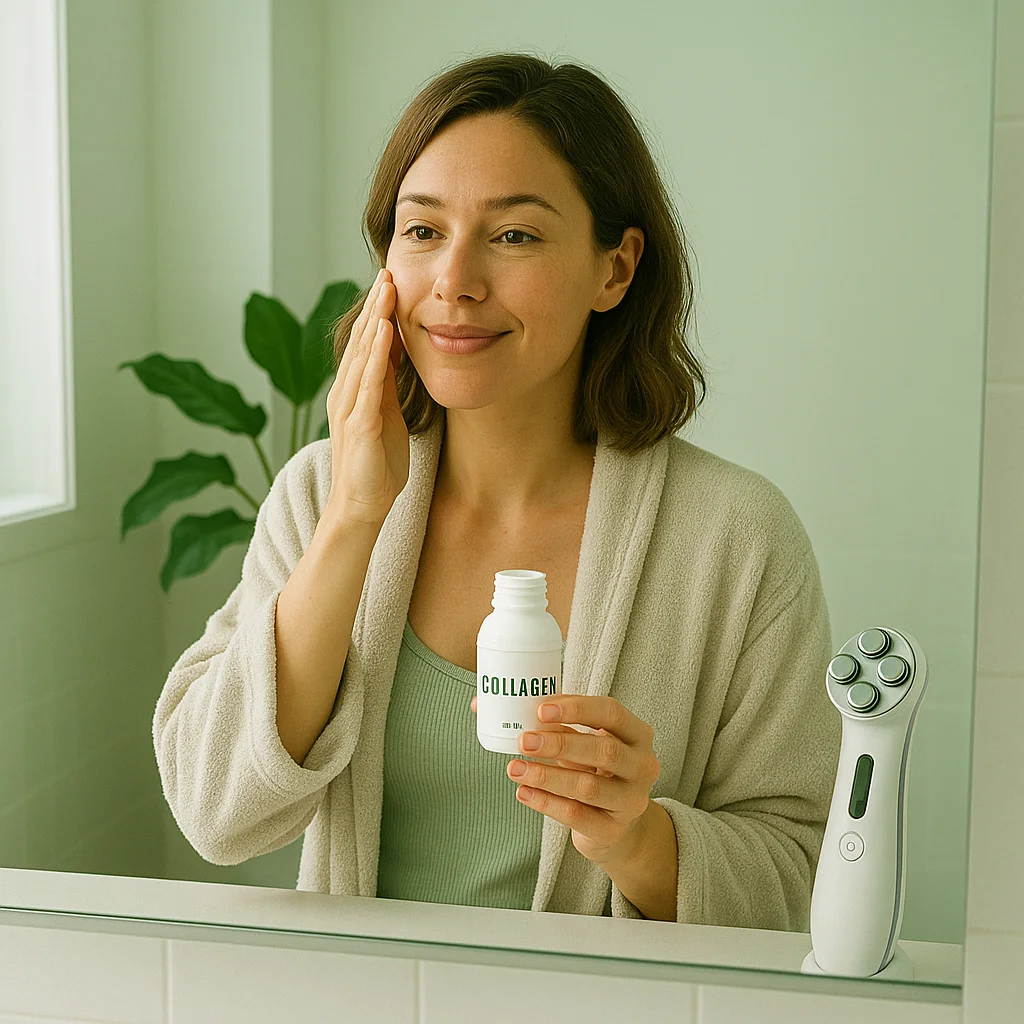
How RF Face Device For Wrinkles Reactivate Collagen Production
Mechanism of radio frequency collagen skin rejuvenation
They use electrode-based technology to deliver precisely controlled thermal energy deep into your dermis, boosting collagen formation where it matters most.
This tiny, focused injury gets your skin’s wound healing response into action, leading to the activation of fibroblasts, fresh collagen production (collagen neogenesis), and remodeling of the dermal matrix.
RF cleverly targets the deeper layers without causing severe damage to the surface, providing serious remodeling with minimal downtime.
Temperature
The sweet place for collagen reactivation? Studies suggest that the magic happens when skin temperatures hit around 60°C to 70°C during RF sessions.
While this particular study didn’t define the exact numbers, this temperature range is crucial for denaturing existing collagen strands and laying the way for stronger, fresher collagen to take over.
Clinical Evidence For Radio Frequency Collagen Facial
In a study on 12 menopausal women (ages 57 to 67), those who paired radio frequency collagen skin rejuvenation with topical and oral collagen saw a substantial 24.4% rise in dermal thickness on the left side of the face and 21.1% on the right side after just 60 days.
Women who utilized RF alone (without collagen) still exhibited considerable gains: 17.7% (left side) and 16.2% (right side).
In comparison, using only collagen without RF resulted to minor gains, topping out at roughly 16.6% to 17.6%.
Multiplicative Effect: Evidence Of Radio Frequency Collagen Skin Rejuvenation
Adding RF to the mix boosted the collagen-boosting effects of collagen by 1.4 to 3.9 times on the left side and 1.1 to 3 times on the right side.
Bottom line: RF doesn’t just aid; it supercharges your skin’s inherent ability to regenerate itself.
Additional Clinical Findings:
Another study quoted here indicated that menopausal women treated with radio frequency collagen skin rejuvenation for four months saw considerable improvements in skin texture and noticeable reduction of facial expression lines a real-world witness to RF-driven remodeling.
RF Face Device For Wrinkles + Collagen Products: A Synergy for Skin Hydration and Firmness
A review on collagen-based materials states how collagen helps in both hydration and elasticity. There are 3 ways how collagen is linked to better hydration and as an extension, Elasticity:
- When it comes to hydration, collagen helps the skin retain moisture. Due to their ability to form barriers, preventing water loss.
- In this study Collagen peptides, which are smaller fragments of collagen protein were tested. They noted that these peptides penetrated the skin and stimulated the production of new collagen fibers.
- Further supporting the skin’s natural repair processes, linking to a resilient and toned complexion.
This study looked specifically into products containing hydrolyzed collagen. Such collagen-boosting ingredients can significantly enhance the skin’s elasticity. Providing all the necessary building blocks for new collagen synthesis.
Radio Frequency Collagen Skin Rejuvenation products’ combined effects
Here’s where things get even more exciting: when fractional radiofrequency (FRF) treatments are paired with topical or oral collagen boosters, they don’t just work, they supercharge each other.
Here’s why:
Micro-injuries produced by RF treatments set off the skin’s natural healing reaction.
For collagen peptides and hydrators to get deeper and boost even more collagen synthesis, these micro-zones are like “open highways”.
In trials, the combination of RF + collagen supplementation showed up to 24.4% improvement in dermal density, greatly surpassing either strategy alone.
Through modifying and tightening skin structure, RF also increases moisture retention in the treated areas. so strengthening the skin’s barrier against water loss.
TL;DR: RF treatments prepare the canvas, and collagen supplements deliver the paint—together creating a plumper, firmer, and more moisturized masterpiece.
Face Device For Wrinkles and Collagen: A Good Duo?
The study skin Visco-elasticity and aging provide evidence that hydrated skin is more resilient. And less prone to develop fine lines and wrinkles.
Well hydrated skin maintains its plumpness and elasticity. Smoothing out the surface, and reducing the depth of existing wrinkles
Dry skin, on the other hand, tends to be more fragile and prone to cracking, leading to deeper and more pronounced wrinkles.
Low hydration levels compromise the skin’s barrier function. Being less capable of retaining moisture and more vulnerable to environmental aggressors. This creates a vicious cycle where dry skin worsens the appearance of aging.
| Group | Treatment | Increase in Dermal Thickness (Left Side) | Increase in Dermal Thickness (Right Side) |
|---|---|---|---|
| Group 1 | Oral only, no RF | +9.5% | +10% |
| Group 2 | Topical only, no RF | +4.5% | +5.2% |
| Group 3 | Oral + Topical , no RF | +16.6% | +17.6% |
| Group 4 | Oral + RF | +14.7% | +15.6% |
| Group 5 | Topical + RF | +17.7% | +16.2% |
| Group 6 | Oral + Topical + RF | +24.4% | +21.1% |
- Best Result: Group 6 (oral + topical + RF) → 24.4% (left) and 21.1% (right).
- Without RF, the maximum dermal thickness improvement was around 17.6%.
- RF boosted collagen remodeling by up to 3.9 times compared to collagen alone.
How Radiofrequency Enhances Skin Hydration and Fights Wrinkles
Radiofrequency (RF) isn’t just about tightening—it’s a secret hydration hero too.
When RF heats the dermis to therapeutic temperatures (about 60°C–70°C), it begins a remodeling process that repairs the skin’s extracellular matrix. This enhanced structure enhances the skin’s barrier, lowering transepidermal water loss (TEWL).
Here’s what happens:
Stronger collagen networks following RF treatments help trap more moisture within the skin.
radio frequency collagen skin rejuvenation demonstrates better water retention and enhanced elasticity, making it less prone to wrinkle formation.
In clinical investigations, areas treated with RF and supporting materials like silicon observed over 20% improvements in skin thickness and hydration.
Think about RF and hydration like a tag team:
RF builds the solid, sturdy frame.
Hydration fills it out, making it supple, bouncy, and less prone to cracking and creasing.
In short? Firm skin + moisturized skin = less wrinkles, greater radiance.
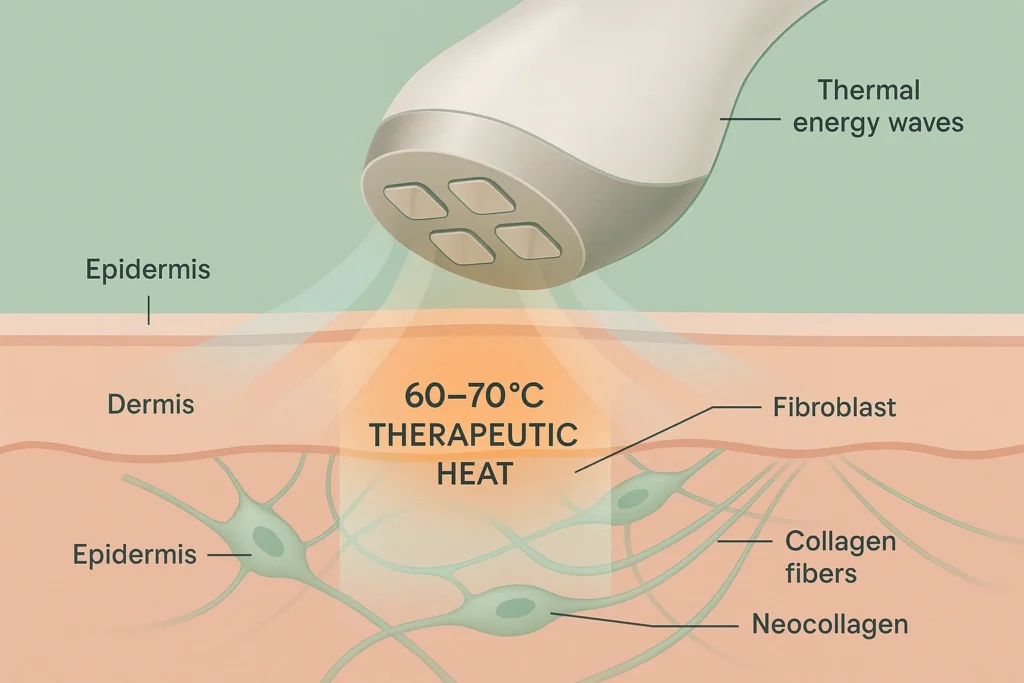
So, Which Devices Help with Collagen?
Let’s Talk Tools: Getting to Know NEWA RF and FAQ 102
What’s actually worth using to boost my collagen at home?” Two solid choices have been making waves, one’s a science-backed classic, the other’s a tech-savvy multitasker. Let’s break them down so you know exactly what you’re working with.
First Up: the NEWA RF Wrinkle Reduction Device
Think of this one like a specialist in your skin-care circle. The NEWA RF Wrinkle Reduction Device uses 3DEEP radiofrequency technology,
Here’s the short version: it heats up your dermis just enough to wake up your fibroblasts, the cells responsible for collagen production. And no, it doesn’t burn or sting; it’s designed to be safe, even for sensitive skin.
It’s also FDA-cleared, which is no small thing. That basically means it’s been tested and shown to help reduce wrinkles and firm up sagging areas, especially around the jawline and lower face.
📖 “Repeated RF treatments have been shown to slow the enzymatic degradation of collagen by improving the quality and density of the collagen matrix.” — Clinical review on dermal remodeling
Now Meet the High-Tech Player: the FAQ 102
If the NEWA is your steady, clinical friend, then the FAQ 102 is a skincare lab in her pocket. It combines radiofrequency, T-Sonic pulsations, and LED therapy – so we’re talking a full-on skin-boosting experience.
It still heats your dermis like the NEWA does, but also brings in light therapy and gentle pulses to give that extra oomph for collagen support and brightness.
This multi-modal approach is especially great if you’re in your 20s or 30s and want to get ahead of the aging curve.
📖 “RF cleverly targets the deeper layers without causing surface damage, providing meaningful collagen remodeling with minimal downtime.” — Radiofrequency research
So, What’s the Difference?
Let’s keep it simple:
- The NEWA RF is more clinical and conservative. It’s perfect if your skin leans sensitive or you’re more focused on lifting and firming in areas like the jowls or cheeks.
- The FAQ 102 is more cosmetic and versatile. It’s designed for that “spa-at-home” experience and ideal for early signs of aging—think fine lines, dullness, or subtle sagging.
Both will help you rebuild collagen; it just depends on how your skin behaves and what kind of experience you prefer.
Before You Start: How to Prep Your Skin (and Your Collagen)
Getting the most out of these devices takes a few easy prep steps – and trust me, they make a big difference.
- Start with a clean face Wash off any makeup, sunscreen, or oils. You want your skin fresh and ready to absorb all that goodness.
- Use a conductive gel This part’s non-negotiable. Whether it’s the gel that came with your device or one the brand recommends, it helps the RF energy glide smoothly and safely into your skin.
- Take your collagen supplement 30–60 minutes before Go for hydrolyzed collagen peptides. And if your supplement includes Vitamin C, even better – it helps your body actually use that collagen by stimulating fibroblasts.
Pro Tip: Look for collagen blends that include hyaluronic acid or peptides. They give your skin a hydration boost and help with elasticity, which means firmer, plumper results over time.
Using the Devices: Best Practices by Brand
So now that you’ve picked your collagen-boosting tool, let’s get into how to actually use it. Whether you’re using the NEWA RF or the FAQ 102, the key to results is technique, consistency, and a bit of strategic layering with your collagen support.
📖 “In studies, women treated with RF showed a significant reduction in dermal degradation markers and an up to 24.4% increase in dermal thickness, highlighting how effective this heat-triggered remodeling can be.” — Clinical Evidence for Radio Frequency Collagen Facial
How to Use the NEWA RF Wrinkle Reduction Device Correctly
How Often to Use:
Start off strong: five times a week during the first month. Once you’ve built up your collagen, you can cut back to 2–3 times a week to keep it up.
Where to Use It:
Pay attention to the jawline and cheeks on the lower face, where drooping usually starts.
How Long It Takes:
Four minutes for each location. A full session for your whole face? About 20 minutes in all.
Technique Matters:
Use slow, circular motions. This helps build a steady thermal effect deep in your dermis (around 60–65°C)—the sweet spot for waking up those collagen-producing fibroblasts.
FAQ 102: Layering RF, Pulses & Light for Multi-Benefit Lifting
How Often to Use:
3–4 times a week is your rhythm here.
Where to Focus:
Target areas like the nasolabial folds, forehead, and those marionette lines. These being spots that tend to show early signs of aging.
Session Timing:
Depending on your settings, each session should last 5–10 minutes. The LED + RF + T-Sonic combos can come in handy, check out our other articles that go in depth.
Pro Technique Tip:
Use lifting strokes—think upward motion along your cheekbones or jawline. Alternate between modes for that extra synergistic effect between RF and LED.
The Collagen Synergy: What to Pair & Why
Let’s talk about what really turbocharges results—pairing your device with the right collagen support.
🌿 Oral Collagen (with Peptides + Vitamin C)
Taking it 30–60 minutes before your session can help to surge your bloodstream with these building blocks.
What it does:
- Enhances dermal thickness
- Stimulates fibroblasts
- Increases collagen density over time
Look for hydrolyzed peptides (Type I & III) with Vitamin C—it’s essential for collagen synthesis.
🧴 Topical Boosters (Right After Treatment)
Right after your RF session, there is an increase in your skin’s absorption level. That’s when you want to apply active topicals:
- Hydrolyzed collagen – instantly plumping and hydrating
- Tripeptides (like GHK-Cu) – signals your skin to rebuild
- Sodium ascorbyl phosphate (SAP) – stable form of Vitamin C for brightening and collagen support
This step locks in the gains and extends the effects of your RF treatment.
Post-Treatment: Seal It All In
What you do after your session is just as important as the treatment itself.
✅ Apply a hydration shield
Reach for hyaluronic acid, ceramides, or both. These reduce transepidermal water loss (TEWL) and keep your skin barrier calm and replenished.
✅ Shield from UV
Avoid the sun for 24 hours post-treatment. So following up with SPF 30+, broad-spectrum is a must.
✅ Stick with your collagen supplements daily
Just like watering a plant – you need consistent support to keep those new collagen fibers strong.
✅ Drink up
Hydrated skin = a more resilient collagen matrix.
When Will I See Results?
Everyone’s skin is different, but here’s a general timeline of what to expect if you’re staying consistent:
| Week | What You Might Notice |
|---|---|
| 2–3 | Skin feels more hydrated, slightly firmer |
| 4–6 | Better elasticity, subtle wrinkle softening |
| 8+ | Smoother contours, visibly improved density |
| 12 | Full-on collagen remodeling in progress |
🌱 Think of this as training your skin, not a quick fix. With the right tools, technique, and supplementation, you’re setting the foundation for longer-lasting radiance
CONCLUSION
Let’s keep it simple. Here’s what you’re walking away with:
- Collagen (Types I & III) is the backbone of firm, elastic skin—and it naturally declines with age.
- Radio frequency (RF) treatments like the NEWA RF Wrinkle Reduction Device and FAQ 102 safely heat the dermis to kickstart collagen production.
- Hydration + collagen supplements (oral + topical) work better with RF—helping you get smoother, firmer results faster.
- NEWA RF is ideal for mature, sensitive skin. FAQ 102 suits younger skin with early signs of aging.
- Consistency is key: build a weekly routine, prep your skin, apply the right actives after each session, and stay hydrated.
📖 “RF treatments prepare the canvas, and collagen supplements deliver the paint—together creating a plumper, firmer, and more moisturized masterpiece.”
Before you go— if you’re curious about pushing your collagen game even further, here’s a little teaser: in our next post, we’re going into “RF Facial Device + Hydrolyzed Collagen: The Skincare Duo Your Routine Is Missing ” It’s where things become even more interesting. where we discuss how hydrolysed collagen functions.
Stick around—your skin’s next big upgrade is just a click away.
